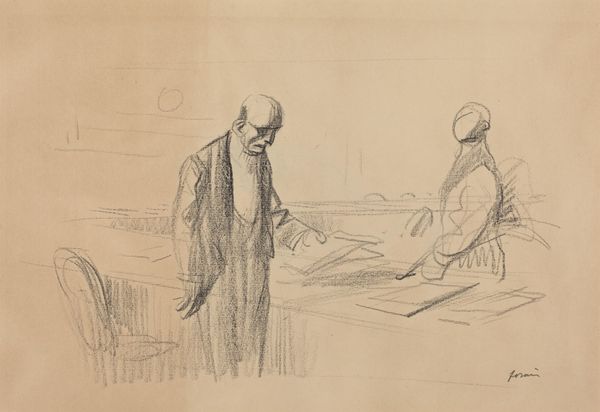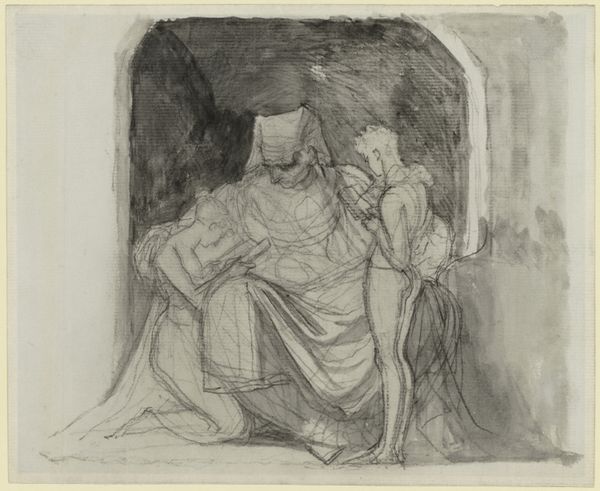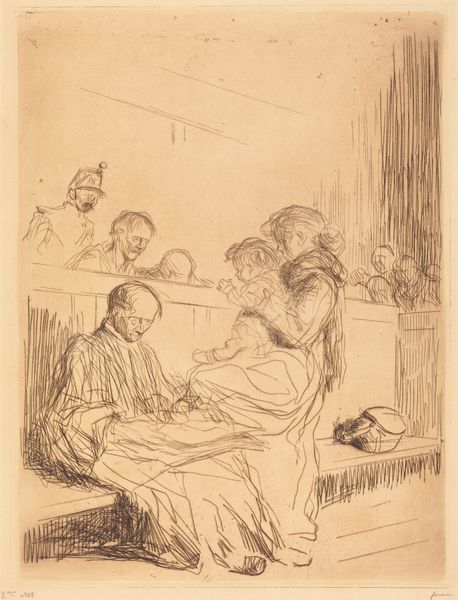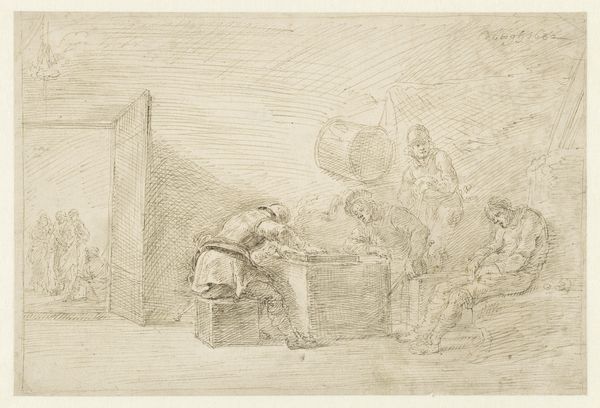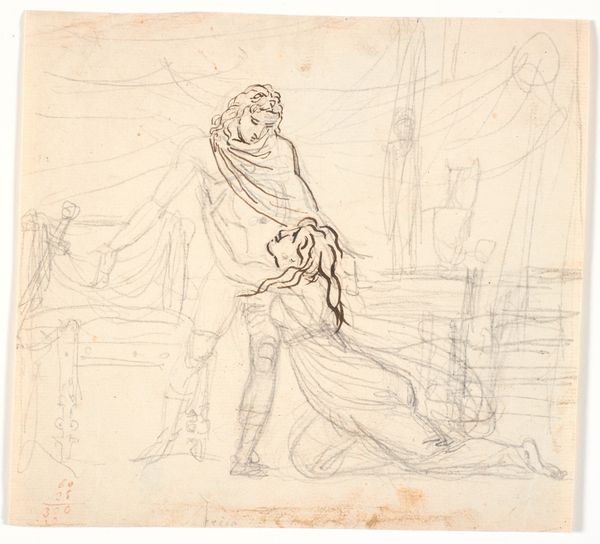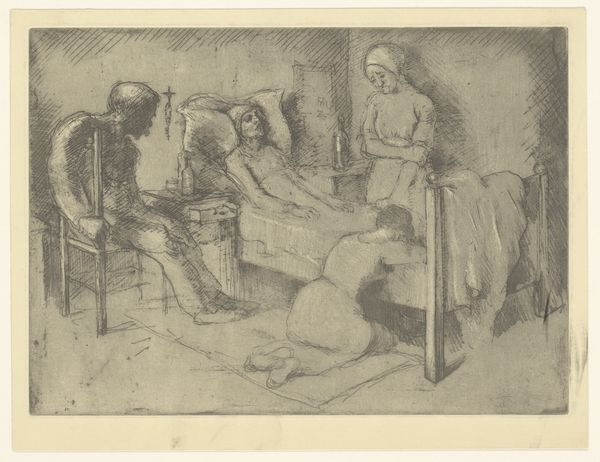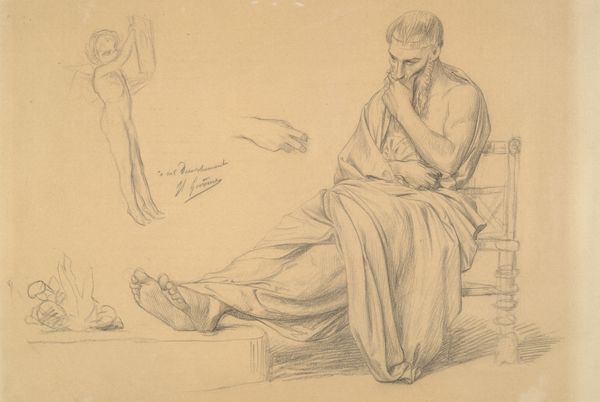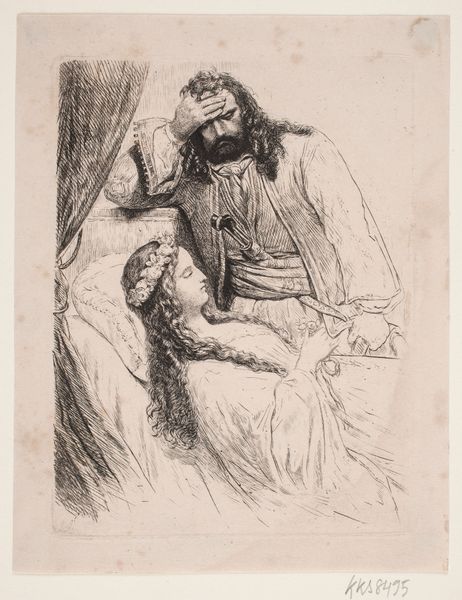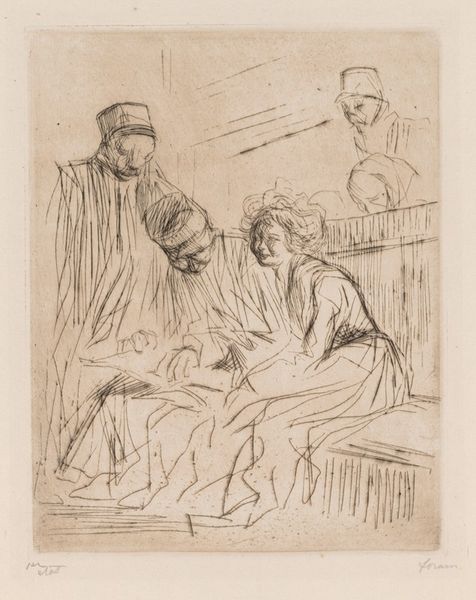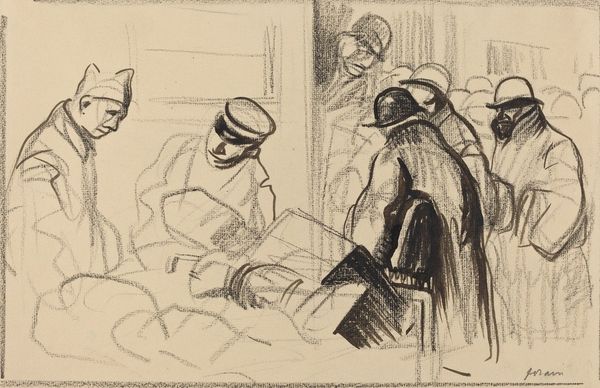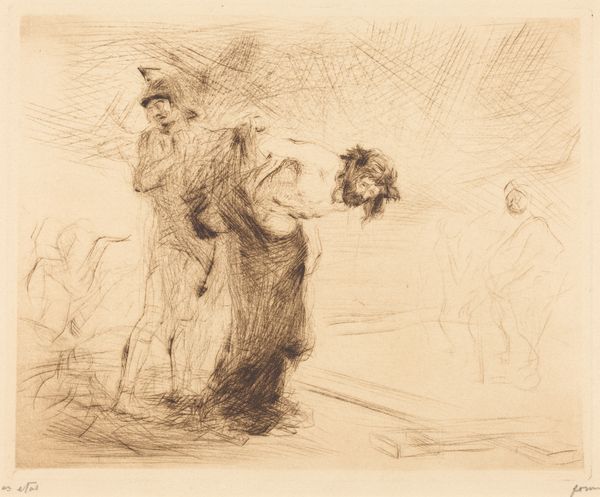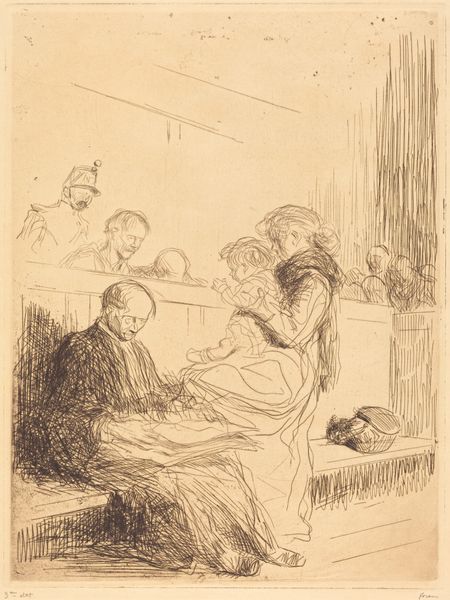
Copyright: National Gallery of Art: CC0 1.0
Curator: Here we have Jean-Louis Forain’s 1910 etching, “Fainting at the Hearing.” What’s your first impression? Editor: Oh, the drama! It's all angles and frantic lines. You can practically hear the gasp of the crowd. Gives me a theatrical kind of shiver. Curator: Indeed. The stark lines create a palpable sense of unease. Note how Forain masterfully uses implied lines to suggest a bustling courtroom scene just beyond what we can explicitly see. Editor: Right! The almost ghostly figures looming over the…fainter? Gives this really unsettling vibe. They’re there, but they're not *really* there, you know? And that slumped figure! Total pathos. Like, what did they HEAR? Curator: Precisely. The narrative ambiguity is key. Forain invites us to consider the power dynamics at play, the individual overwhelmed within a formal institution. Observe the detailed rendering of the uniform of the man supporting the slumped figure juxtaposed against the more abstract rendering of the background and secondary figures. This formal device centers the narrative tension. Editor: I love how the artist doesn't spoon-feed you. This person is down, others react—your mind just fills in the awful blank. It's a stark reminder of how quickly a supposedly civilized event can descend into, well, human messiness. A dark humor, perhaps? Curator: I appreciate that reading, especially in light of the dry, satiric wit often attributed to Forain’s oeuvre. However, I read it more as social critique embedded within the visual rhetoric. The composition seems calculated to amplify the fragility of the individual before power. Editor: Mmm, social critique, always a party! Though, I must say, sometimes the most savage critique IS the funniest. Maybe Forain wants us to see both: the crumbling of ideals, the absurd reality. A little bitter laughter perhaps? Curator: Perhaps, it leaves us with much to ponder! Editor: Forain definitely sparks the imagination—dark, funny, disquieting, it’s all in the mix. A fascinating study in social tension and the human condition.
Comments
No comments
Be the first to comment and join the conversation on the ultimate creative platform.
